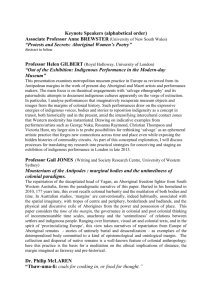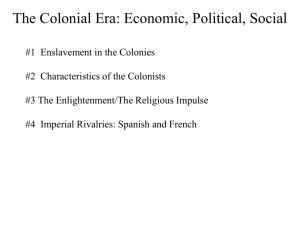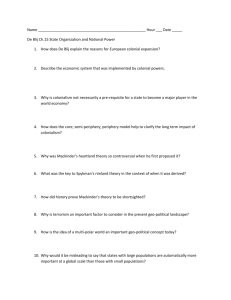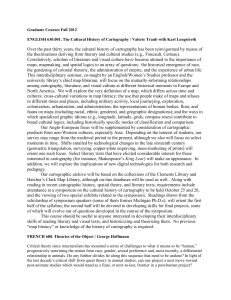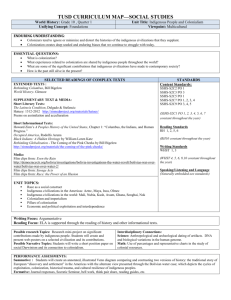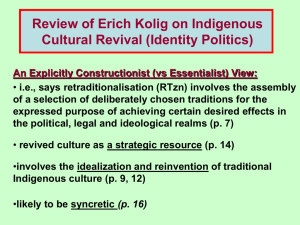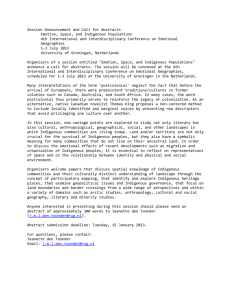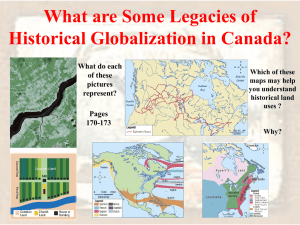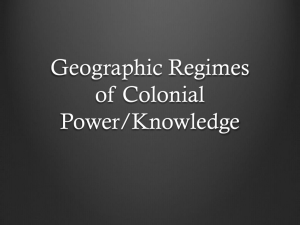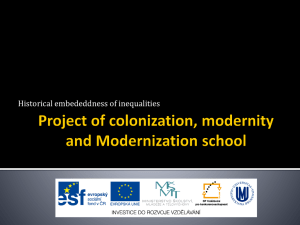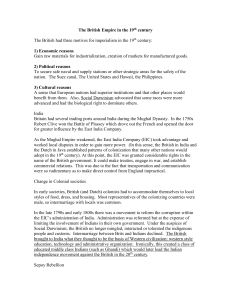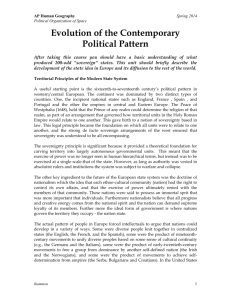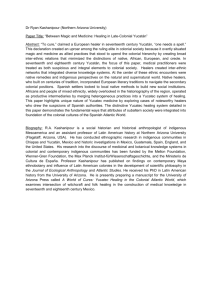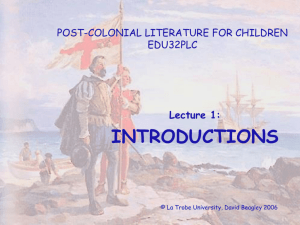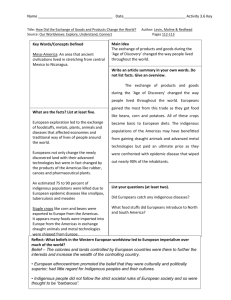Colonial Legacies in Argentina
advertisement
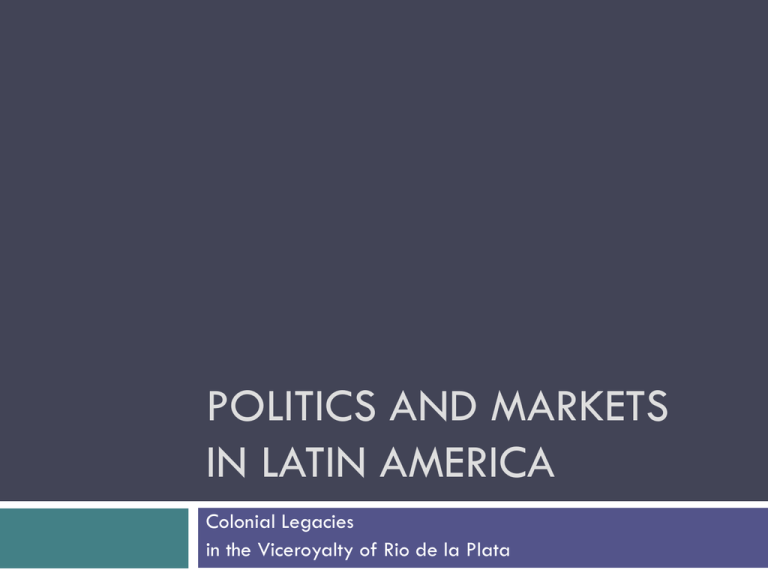
POLITICS AND MARKETS IN LATIN AMERICA Colonial Legacies in the Viceroyalty of Rio de la Plata Colonialism in Argentina Before the Encounter Characterized by sparse populations of relatively small, isolated, and semi-nomadic tribes Some Indigenous Groups: North/Costal: Tupi, Guarani Mountain Highlands: Kolla, Calchaquí Grasslands: Charrúa, Pampa Colonialism in Argentina After the Encounter Settlement Patterns: Viceroyalty Río de la Plata • Permanent settlement by Europeans • Eviction of indigenous groups Viceroyalties in 1784 Economic Structures • Economic Life: mercantilism and resource extraction • • • Transportation: rivers to the interior, ports for international shipping Ranching: hides and tallow Economic opportunity was tied to Royal patronage • • • Grant of Encomienda Internal trade regulation Monopolization of oceanic trade Political Structures Political Structures – Absolutism AND a disregard for the law • – While maintaining de jure legal authority, the high cost of intervention in remote areas meant that day to day governance was left to local authorities Sources of influence • • • Landowners: the ability to employ and to grant/deny access to large parcels of land Merchants: centralized credit networks, without access to which rural production and consumption would be blocked; absentee ownership of estancias Popular influence: based on nonobservance of the law and refusal to others’ interests Social Structures Social Stratification • Crown officials • Urban merchants • Rural estate holders • Managers of estancias • Rural small-holders • Non-white peoples • • • • • Mestizo (European/indig) Mulatto (European/black) Indigenous Zambo (indig/black) Black Xenophobia • Christian theology questions the humanity of indigenous groups • The “white” myth Caudillos and patronísmo Colonial Legacies Chasteen argues that: "For Latin America, conquest and colonization by the Spanish and Portuguese created patterns of social domination that became eternal givens…" (p. 29) Is this a convincing argument? If so, what is it about Spanish colonial structures that made them so strong? If not, what is a plausible alternative interpretation?

